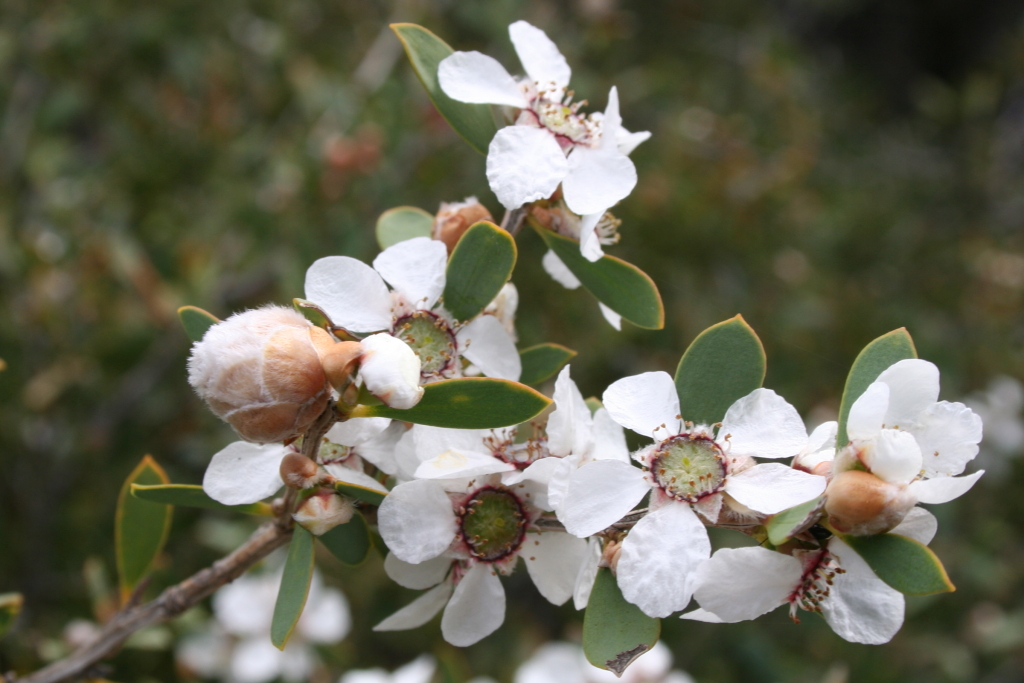Gaudium laevigatum
(Gaertn.) Peter G.WilsonShrub or tree to 5 m high; bark on smaller stems smooth or becoming rough. Young stems with a groove near base of petiole. Leaves narrowly obovate to obovate, 15–30 mm long, 5–10 mm wide, flat, glabrous, usually grey-green; apex obtuse, with a small point, flat. Flowers 15–20 mm diam.; hypanthium 3–4 mm long, usually glabrous, rarely silky, sessile; sepals triangular, 1.5–2 mm long, silky on outer surface, persisting on fruit; petals 6–7 mm long, white; ovary 7–11-locular, apex shortly silky all over. Fruit deciduous (but sometimes tardily so), obconical, 6–8 mm diam., surface glabrous and wrinkled; seeds c. 2 mm long, often winged, with a reticulate surface pattern. Flowers Aug.–Nov.
LoM, MuM, GleP, Brid, VVP, GipP, OtP, WaP, Gold, CVU, GGr, DunT, EGL, EGU, WPro, HSF, OtR, Strz. Also WA, SA, Qld, NSW, Tas. Common on sandy coastal foreshores and dunes from c. Anglesea eastward (where native); introduced and naturalised on some western Victorian coasts (e.g. Port Fairy, Portland) and a few inland sites.
Hybrids with G. myrsinoides have been recorded.
 Spinning
Spinning